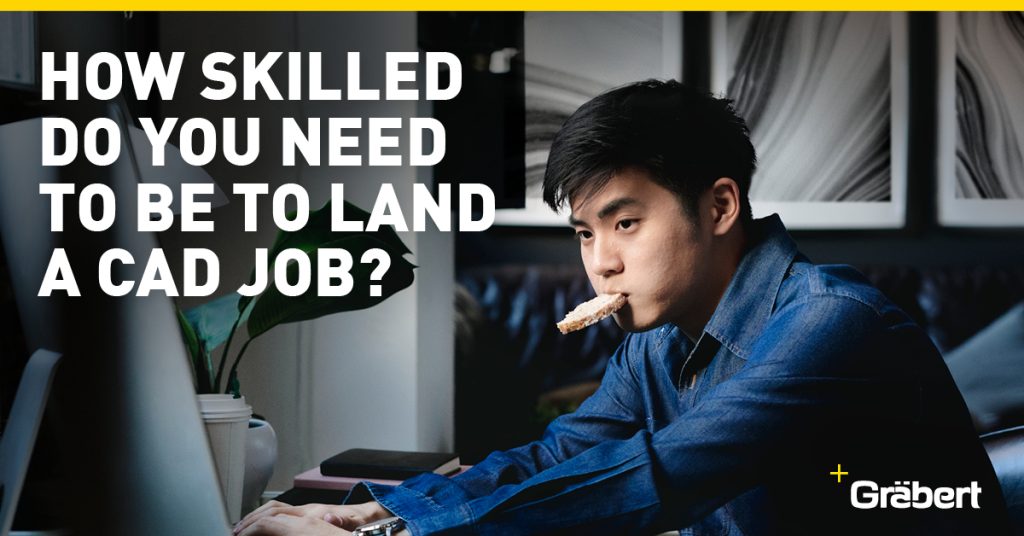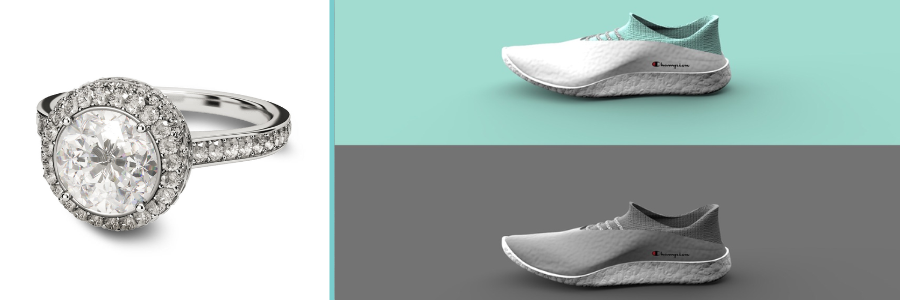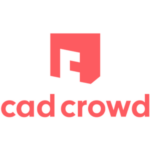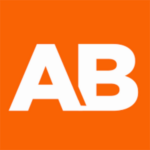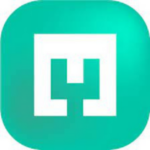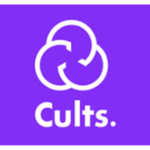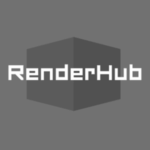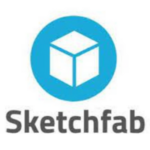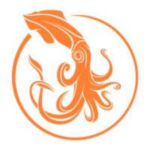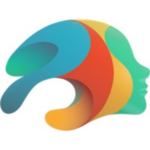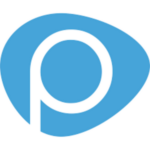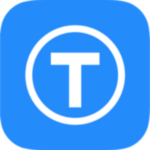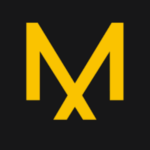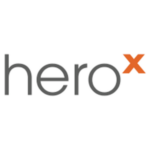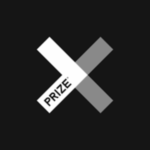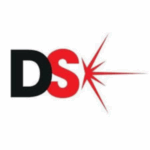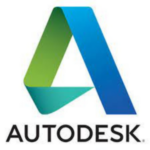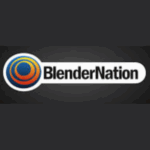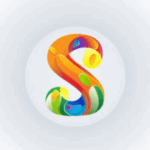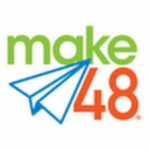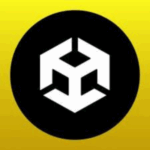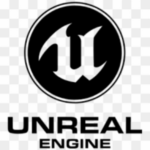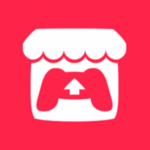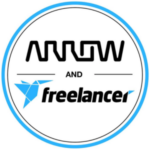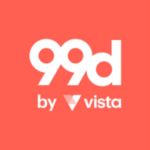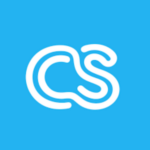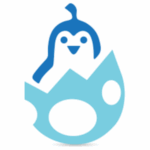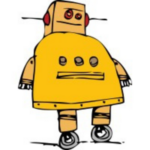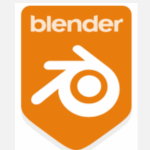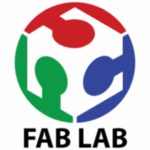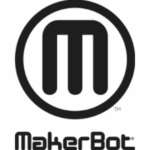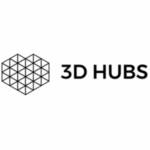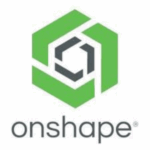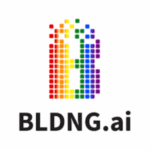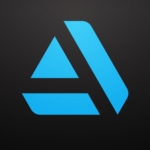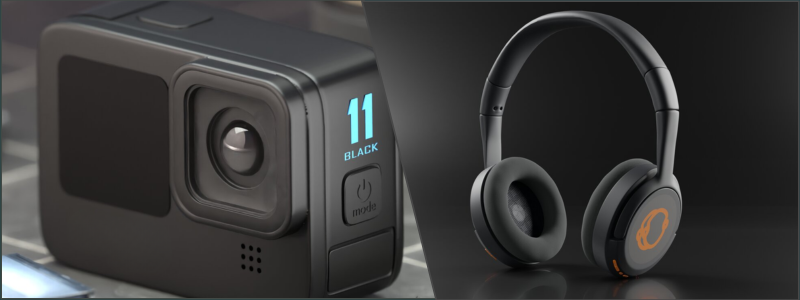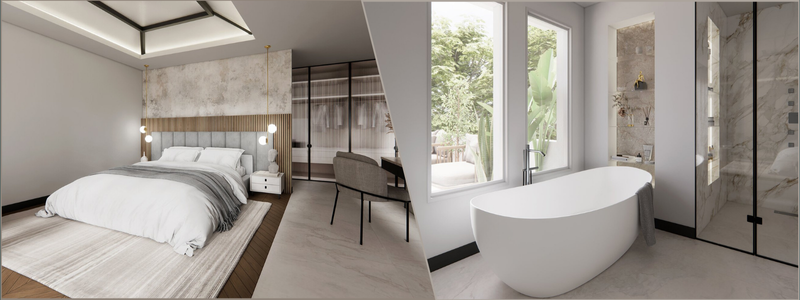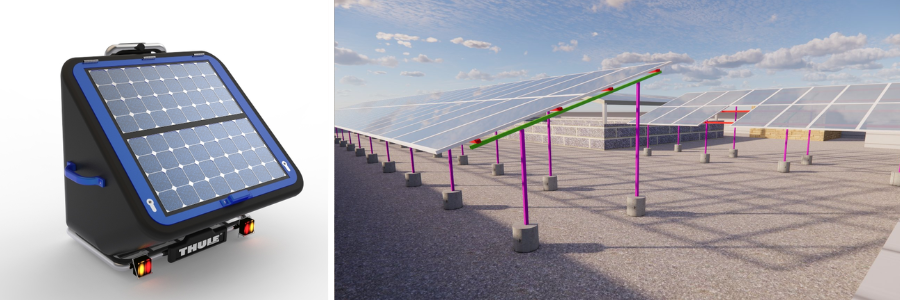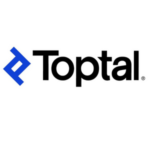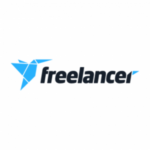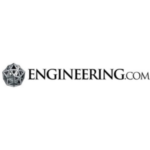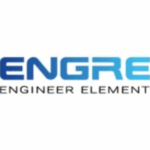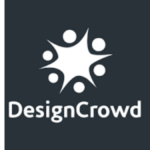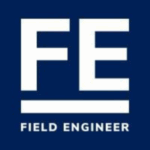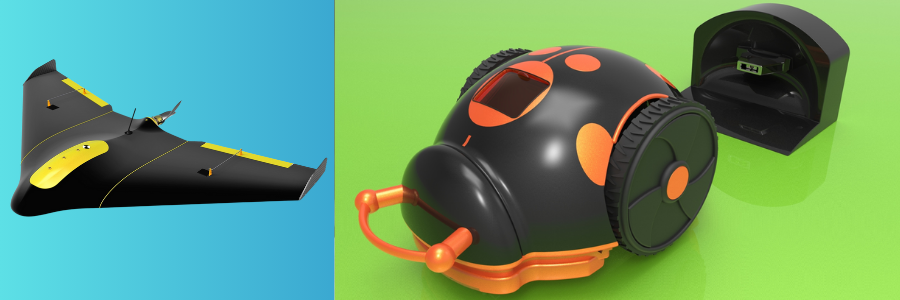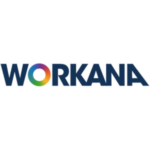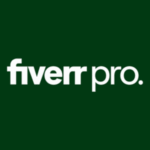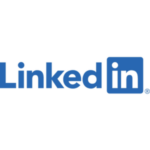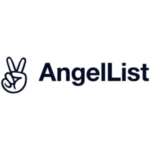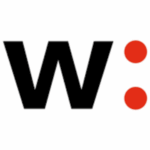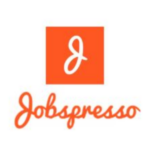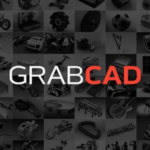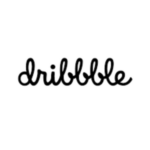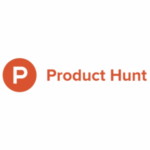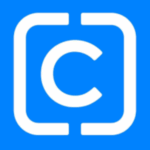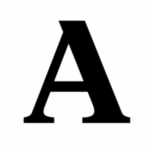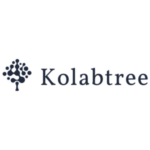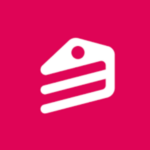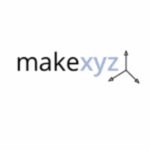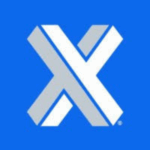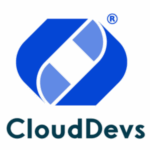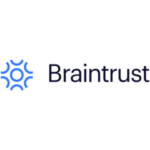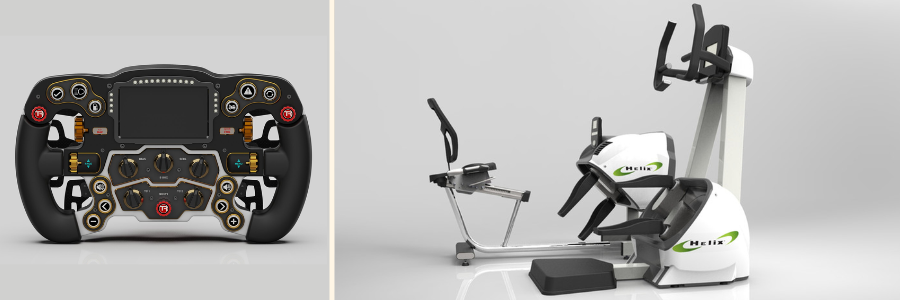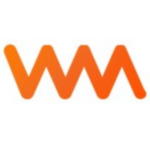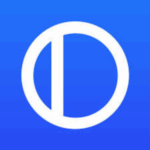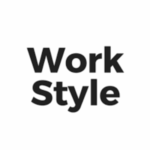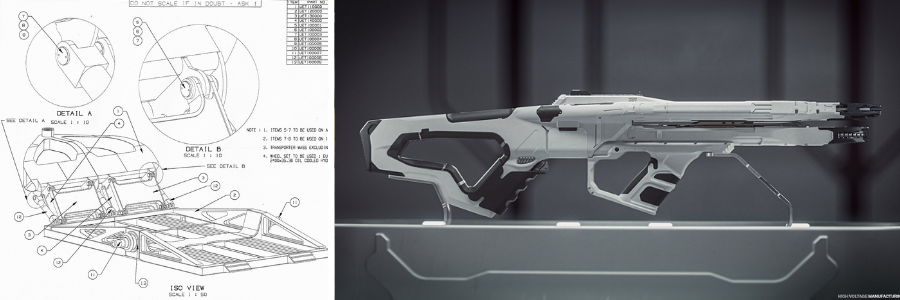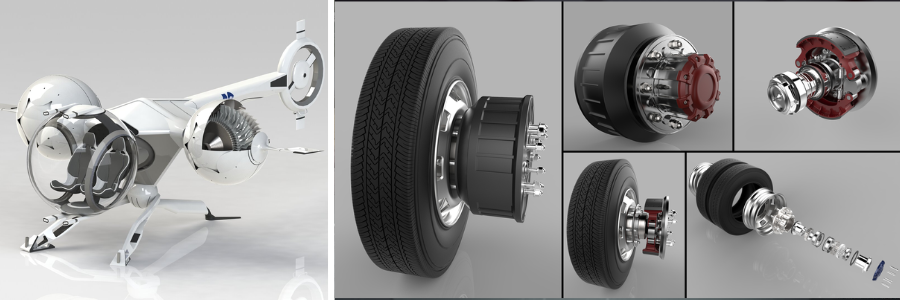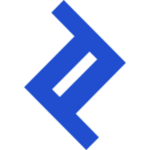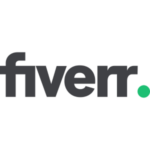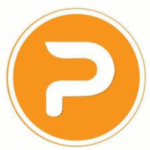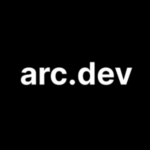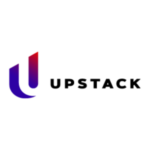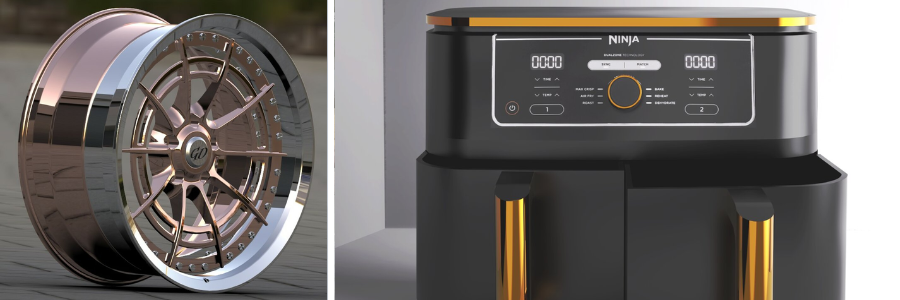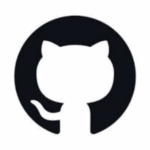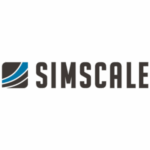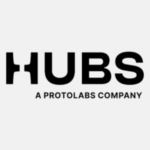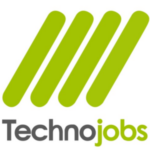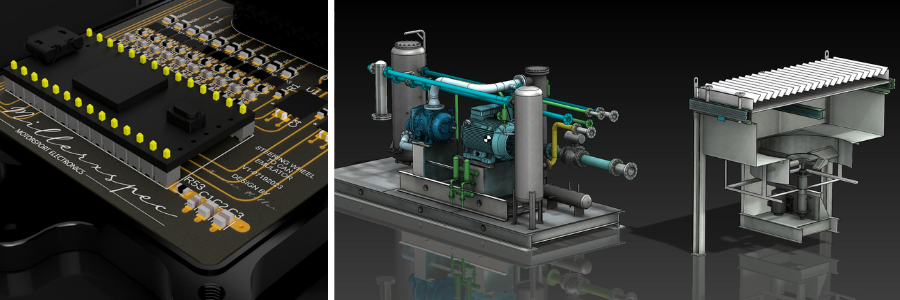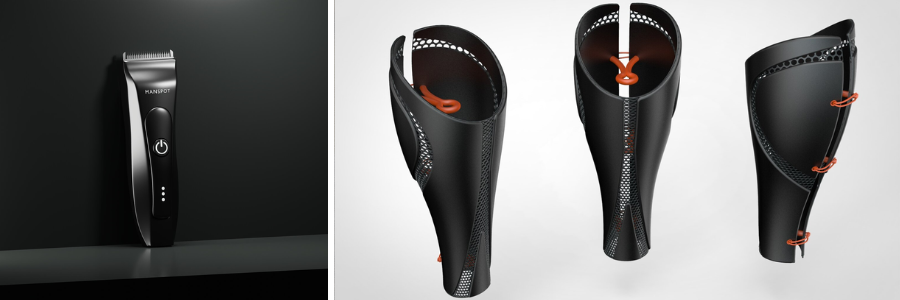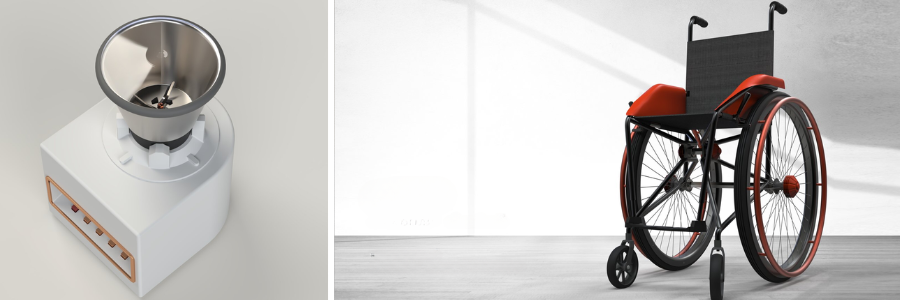There is something enticing about transforming an empty digital slate into a jaw-dropping 3D work of art, and being rewarded for doing so. Whether you’re a 3D sculptor, a product modeler, a CAD master, or an animation guru, there is a crazy, constantly transforming world of online competitions where design isn’t just about imagination – it’s about domination. Today’s blog is not a roster of any old sites that whisper “upload your model here.” This is a selective tour of the most exciting arenas of digital creation—places where bragging rights, prize cash, and even long-term deals await anyone brave enough to compete.
Some sites are laser-specific to 3D engineering. Some of them throw a wider net but still revel in the polygonal brilliance of modelers, architects, and animators. So, grab that Wacom pen, crank up that GPU, and extend those creative fingers, headfirst into the best 51 places that make 3D modeling services from an individual art form to a worldwide competition.
1. Cad Crowd — Where engineers and modelers engage creatively
If there’s one kingdom where freelance collides with ferocious 3D CAD competition, it’s Cad Crowd. This site doesn’t merely list jobs. It opens the field to crowdsourced engineering, architectural renderings, industrial modeling, and outright CAD warfare. Clients upload actual design challenges and wait as a horde of worldwide talent scurries to create the greatest 3D solution. Imagine Iron Man-level design combined with remote collaboration. From medical hardware to sci-fi furniture, competitions have legitimate prize money and publicity. Cad Crowd stands out specifically for being intensely focused on 3D design professionals, with industry-level precision CAD standards. Winning is not only enjoyable, it’s a defining moment for your portfolio.
Website: Cadcrowd.com
2. Arcbazar — The architect’s solution to design battles
Imagine if architecture students, interior designers, and 3D visualizers totally went gladiator in a virtual sandbox? Arcbazar has the solution. Focusing on residential, garden, and interior problems, it challenges creatives to enter detailed 3D visualizations and walkthroughs based on actual homeowner specifications. The twist? You’re competing against international competition. Assignments may include redoing a kitchen, yard work, or glass-box-styled houses, each with client feedback and prize money. It’s half design contest, half architectural reality show, all presented on a streamlined platform where even second and third-place submissions sometimes capture client attention.
Website: Arcbazar
3. GrabCAD challenges — engineering precision meets creative fury
GrabCAD’s Challenges feature is more than a fun aside. It’s a high-level proving ground. Backed by major-name tech companies such as GE, NASA, or Stratasys, each challenge targets 3D CAD design, mechanical parts, or product prototypes. Students could work on designing a satellite bracket, printing out a 3D prosthetic hand, or building a gear system with ridiculously tight tolerances. It’s engineering meets purpose, with some real-world challenges and real-world impact. What sets GrabCAD apart is the embedded community feedback mechanism: modelers receive exposure, critique, and even spotlighting on GrabCAD’s Engineering Blog. This isn’t amateur-level competition – it’s engineering with worldwide implications.
Website: Grabcad.com
RELATED: Best 50 Sites to Hire Freelance 3D Modeling Experts and Remote 3D Designers for Companies
4. MyMiniFactory contests — where makers meet their moment
To those immersed in 3D printing services, MyMiniFactory is Comic-Con and the Olympics in one. Their series of contests includes everything from miniatures of tabletop games to cosplay props, jewelry, and gadgets. They have to be 3D-printable and sometimes they come with actual prizes—such as cash, spools of filament, or licensing deals. The true prize? Exposure. Winners are sometimes showcased, partnered with companies, or showcased in specially curated collections. Whether you’re ZBrush-savvy or a Fusion 360 fanatic, MyMiniFactory brings a maker-centric vibe with challenges that are creative, weird, and wonderfully nerdy.
Website: Myminifactory.com
5. CGTrader challenges — high stakes for high-poly heroes
CGTrader is a familiar name for anyone selling 3D models, but its contest section is where things really heat up. Their challenges, frequently backed by sponsors like NVIDIA or HP-range from futuristic cityscapes to retro gadgets. The entry bar is high, often requiring clean topology, UV maps, and commercial-quality results. While some contests lean toward the artistic (hello, concept art-level visuals), others call for hardcore CAD precision. Best of all, winners don’t just get cash – they get clout. CGTrader often publishes post-contest articles showcasing winners, which means your name can travel far beyond the leaderboard.
Website: Cgtrader.com
6. Threeding competitions — niche but nifty for print-ready design
Threeding may not share the branding of CGTrader, but it knows its market: 3D printable models. Its competitions are refreshingly simple, design functional, printable things that are interesting. Previous themes have consisted of household gadgets, art deco home accessories, and science toys. In contrast to sites that bog down with too many detail requirements, Threeding competitions are happily accessible to new users while staying rewarding for pros with an eye for manufacturability. The rewards aren’t huge, but the exposure is increasing, particularly for artists who prefer functionality to polygon numbers.
Website: Threeding.com
7. Cults3D contests — pop culture meets design and innovation
Cults3D exists at the crossroads of geekdom and industrial design. You’ll be working on a Dungeons & Dragons dice tower in one month and a solar-powered phone stand in the next. Their contests are usually themed and utterly zany, with brands and pop culture IP sometimes thrown in for good measure. The site’s devoted maker community is a big part of the fun, as makers mobilize to vote, share, and remix submissions. Cults3D also promotes winners in email newsletters and blogs, providing contests with a serious shot in the arm. It’s the sort of site where a witty Batman lamp could possibly get you a 3D printer.
RELATED: Cults3d.com
8. RenderHub competitions — visual impact, technical polish
RenderHub excels at fantastic, stylized rendering, so its competitions require both artistic presence and 3D technical competence. Challenges could cover fantasy building, sci-fi vehicles, or hyperreal figures with well-defined judging standards and killer visual requirements. Unlike clean CAD sites, RenderHub promotes texture control, cinematographic lighting, and narrative. Awards range from cash to 3D software and RenderHub credits, but the actual bonus is eyeballs – winning models usually make it onto the homepage and even secure licensing agreements. If you enjoy mixing art and engineering, this is your virtual Colosseum.
Website: Renderhub.com
RELATED: Best 50 Sites to Hire Freelance 3D Artists & Remote 3D Rendering Service Experts for Companies
9. 3DExport contests — professional panache with Eastern European momentum
3DExport has continued to rise from a low-key Eastern European marketplace into an international platform for 3D modeling creatives, and its contests demonstrate that growth. With subjects such as sci-fi interiors, medieval armaments, or even dreamlike furniture, there’s an evident emphasis on clean, portfolio-quality output. The readers are professionals, the judges are typically designers themselves, and the site’s focus on quality modeling is evident. Though less showy than CGTrader, 3DExport draws experienced creators who are there for exposure as well as creative challenge.
Website: 3Dexport.com
10. Sketchfab challenges — interactive models with a twist
Sketchfab doesn’t merely desire pretty 3D renders—it desires you to animate it, tell a story, and possibly even allow users to spin it around in real-time. Their contests are about WebGL-driven 3D scenes with subject matter varying from post-apocalyptic wastelands to adorable animal hamlets. What makes Sketchfab contests unique is that they are interactive in nature: audiences can examine every texture, topological detail, and lighting decision right within the browser. Winners receive cash rewards and legitimate internet stardom through social media shout-outs, blog posts, and even interviews. If your greatest asset is storytelling and interactivity, then Sketchfab’s where you leave your stamp.
Website: Sketchfab.com
11. TurboSquid PixelSquid contests — hyperrealism with a commercial edge
TurboSquid is famous for selling best-in-class 3D assets to game studios, ad agencies, and game developers. But when they host a PixelSquid or modeling competition, the rules move into “Hollywood-grade modeling needed” territory. Think ultra-high-detail mechanical components, realistic animals, or modular architecture sets. Their challenges tend to require photo-real output, tidy mesh creation, and industry-standard file handover. These are not for beginners, but they are golden nuggets for 3D modelers who need to prove themselves at Pixar or EA standards. Winners typically receive generous rewards and sometimes even licensing agreements via the platform.
Website: Turbosquid.com
12. Hum3D competitions — automotive artistry at full throttle
Hum3D is now a brand name for 3D car rendering services. Its competitions are masterpieces of thematic complexity: concepting post-apocalyptic cars, garage interiors, or concept sports cars with visual narrative baked in. It’s not simply modeling a fantastic car – it’s world-building. Submissions are judged on realism, composition, texture, and imagination. Professionals from automotive design and engineering services, advertising, and even motorsports often participate. Prizes are impressive, things like software licenses, plug-in bundles, and cash, but so is the clout. Win one of these and you’re not just a great modeler; you’re a visual storyteller with horsepower.
Website: 3Dmodels.org
13. SketchUp 3D basecamp challenges — architectural modeling meets community fun
Though not a year-round competition venue, Basecamp events on SketchUp often contain mind-blowing design challenges. From designing energy-efficient houses to reinventing city space, competitions on SketchUp draw architects, students, and spatial thinkers who adore SketchUp’s elegant, straightforward modeling aesthetic. Judges are usually certified experts or even construction companies, and the actual prize is usually featured in SketchUp’s worldwide community. Participants might even end up presenting their models at live events or webinars. If you’ve ever wanted your 3D building to become part of a case study, this is your chance.
Website: Sketchup3d.com
RELATED: Best 51+ Sites to Find Freelance 3D Modeling Jobs, & Work for 3D Designer Projects
14. Daz 3D contests — dramatic characters, cinematic flair
If your 3D strengths lie in character creation, Daz 3D is your playground. Their contests revolve around expressive poses, dramatic lighting, and narrative-driven scenes, all created using Daz Studio’s massive content library. You’ll see digital humans mid-battle, futuristic cities glowing in neon, or fantasy warriors mid-swing. It’s not about polygon counts: it’s about emotion, impact, and rendering finesse. These contests often come with themes like “Heroic Moments” or “Dark Futures” and include rich prize pools: 3D assets, exclusive bundles, and premium memberships. It’s like dipping a movie still into the digital world and putting it in an art exhibition, with awards.
Website: Daz3d.com
15. Pinshape challenges — 3D printing with practical applications
Pinshape is where hobbyists meet pros on one key concept: design it today, print it tomorrow. Their design challenges are designed for FDM printing and resin printing, so whatever you send in needs to be support-conscious, watertight, and printable. Themes vary from home appliances to pandemic fixers (yes, there even was a face shield challenge), and judges appreciate utility as much as beauty. Bonus: entries also tend to become best downloads on the platform, which is passive income if your model wins and gains traction. Pinshape contests have that unusual combination of fun, functionality, and economic potential.
Website: Pinshape.com
16. Treatstock design contests — marketplace meets maker innovation
Treatstock combines a market with a 3D printing service center, and their periodic modeling issues are a personalized mix of design and production. Submissions could be centered on functional home items, accessories, or even healthcare devices optimized for printing. Competitions tend to have an end in mind, something that individuals can actually purchase, use, or modify. The community is smaller than MyMiniFactory or Thingiverse, but the visibility is personal and gratifying. Winners receive product placements, manufacturing alliances, and sometimes direct access to Treatstock’s network of vendors. It’s not a contest, but rather a business launchpad in the making.
Website: Treatstock.com
17. Thingiverse make-it challenges — community voting, maker magic
Thingiverse is a 3D printing giant, and though it doesn’t have design competitions often, when it does, the turnout is huge. Their Make-It challenges come in themes such as “Toys that Teach” or “Assistive Devices” and are usually social good-related. Submissions from experts like toy designers are community-voted and occasionally judged by brand partners such as MakerBot. Since models need to be downloadable and open-source, you also get long-term exposure – some winning designs have more than 100,000 downloads. If you wish to leave a mark and collect bragging rights, Thingiverse contests are the maker’s dream.
Website: Thingiverse.com
18. 3DContest — small platform, high design standards
Even though 3DContest has little in the way of big-time branding, it features surprisingly competitive design fights. Typically centered around mechanical or industrial design, the site attracts a dedicated following of precision modelers who take great pride in geometry cleanliness and functionality. Themes could be mechanical gear systems, modular kits, or robot arms, and the award structure is performance-based: judges scrutinize efficiency, beauty, and even STL integrity. It’s a close-knit, half-underground scene, but that’s half the fun – grab a win here, and you gain niche cred in a hurry.
Website: 3Dcontest.com
19. CGArchitect 3D awards — architectural visualization’s highest honor
Though CGArchitect’s awards aren’t open competitions with hundreds of entries, they still are the archviz Oscars. From across the globe, designers submit their breathtaking stills, animations, and virtual walkthroughs to be judged by a crème de la crème jury. Awards come in Best Student Work, Best Non-Commissioned Project, and Best Real-Time Experience. Winners receive international recognition, software awards, and career-defining limelight. If your area of strength is photorealistic rendering services of architectural wonders, this is the gold standard. Even a nomination here makes you a name to watch.
Website: Cgarchitect.com
RELATED: Freelance 3D Modeling Techniques: An Overview
20. Marvelous designer contests — fashion-forward 3D creativity
When clothing physics is as important as character posture, Marvelous Designer contests step in. This software is a master of dynamic fabric simulation, and its community has regular themed challenges with runway fashion, historical fashion, or game/film costume design. Submissions are evaluated on realism, draping skill, creativity, and quality of render. Awards typically consist of licenses, fabric packs, and money. It’s niche—but thoroughly rewarding for character artists, game designers, or anyone who’s completely fixated on stitching, seams, and silhouettes. These contests show that 3D design doesn’t just end at armor and engines, it can walk the runway, as well.
Website: Marvelousdesigner.com
21. HeroX — moonshot 3D meets mission-driven design
If the old-fashioned contest is too boring, HeroX is your gateway to the universe of 3D design for space technology, disaster response, and humanity-scale challenges. Their challenges are crowdsourced solutions with heavyweight backing: NASA, XPRIZE, or Fortune 500 companies, and frequently require real-world prototyping. You might be asked to model a Mars habitat structure, a water filtration device, or surgical equipment. Prize pools can hit six figures. While not exclusively 3D-focused, many challenges absolutely depend on high-quality CAD and simulation-ready designs. Entering a HeroX contest means you’re not just trying to win – you’re trying to change the world (and maybe get published while doing it).
Website: Herox.com
22. XPrize design challenges — radical innovation, 3D style
Few platforms are more internationally ambitious than XPrize. Their challenge designs have addressed carbon capture, ocean cleanup robots, and moon landers. These aren’t weekend projects—these are moonshot challenges with years-long deadlines and competition at the highest level. 3D modeling is frequently an important aspect of initial concept submission and prototype design development, particularly for teams that are creating hardware, drones, or autonomous platforms. Although not in the traditional format of single-winner contests with prizes, XPrize competitions offer funding milestones, mentoring by experts, and technical reviews. Win one of these and you don’t receive a prize, but you join a timeline of history’s great innovations.
Website: Xprize.org
23. DesignSpark challenges — where engineering meets DIY creativity
Organized by RS Components, DesignSpark periodically introduces innovative 3D modeling competitions that combine electrical and mechanical design. Consider IoT enclosures, home automation starter kits, or robot hardware that must support specific component specs. They have an engineers- and makers-skewing audience, so the tone’s closer to Raspberry Pi than to Pixar. Awards go from hardware and gift cards to development collaborations. Submissions are judged on real-world viability, so it’s an excellent testing ground for CAD modelers looking to stretch both design and problem-solving muscles.
Website: Designspark.com
24. Autodesk design contests — where tools, talent, and innovation come together
When you know Fusion 360, Tinkercad, and AutoCAD’s creator hosts a contest, you can bet it’s the real deal. Autodesk design challenges have covered anything from prosthetics to buildings to test cars. Some are internal competitions, some are on their forums or through school programs, but anyone with talent can usually participate. The beauty here is the software-native ecosystem: you’re expected to use Autodesk tools, which means sleek, multi-tool workflows and creative freedom. Winners often get shoutouts, swag, licenses, and sometimes mentoring from Autodesk partners.
Website: Autodesk.com
25. BlenderNation weekend challenges — fast, furious, fully blender
BlenderNation’s Weekend Challenge series isn’t high-stakes, but it’s high fun. Every week, a new theme is revealed, anything from “Ancient Ruins” to “Microscopic Worlds”, and Blender artists have only a few days to come up with their best render. It’s half speed sculpting, half creative warm-up, and half community flex. The prizes are small (usually just glory and bragging rights), but the exposure and practice are priceless. Top pieces are featured on BlenderNation’s front page, which is a huge traffic generator in the open-source 3D community. It’s raw creative hustle with a Blender-exclusive badge of pride.
Website: Blendernation.com
RELATED: Pros and Cons of Hiring a Freelance 3D Modeler
26. Pwnisher 3D challenges — viral animation, unbelievable reach
Clinton Jones, aka Pwnisher, is a sole 3D force and runs viral monthly animation competitions on YouTube. A pre-defined camera movement or scene template leads off each challenge, and the international 3D community does the rest. Previous prompts such as “Infinite Journeys” or “Boss Fight” have received thousands of submissions, yes, thousands. And the compilation videos? Millions watched. These game challenges have gone wild in popularity because they mesh community atmospheres, narrative, creative expression, and rock-solid technical skill. Even without winning, getting showcased is like being shot into 3D internet fame.
Website: Pwnisher
27. Sketch.io 3D design tournaments — browser-based, wildly accessible
Sketch.io is primarily used for 2D and vector work, but its SketchUp add-ons and 3D extensions have ignited community tournaments that push the boundary between basic design and actual CAD modeling. The tournaments are user-friendly even for a newbie and tend to promote trying out browser-based tools. Though the depth of modeling is lighter than something like SolidWorks, creativity goes through the roof. Awards are variable, but the true prize is the feedback loop and game-like format, ideal for students or 3D designers wanting to push beyond the limits of conventional software.
Website: Sketch.io
28. Make48 challenges — 3D-infused hackathon-style prototyping
Make48 is a national invention competition on TV that routinely uses 3D modeling during its initial stages of prototyping. Designer, engineer, and maker teams have 48 hours to create a functional product with the help of CNCs, 3D printers, and other fab equipment. Though most of the action takes place in person, they sometimes leave open design prompts online for public involvement. The experience is Shark Tank-on-steroids meets 3D modeling marathon. And if your design gets selected by a team? You might even be credited when it reaches the prototype stage … or shelves.
Website: Make4.com
29. Tinkercad Community contests — simple tools, smart challenges
Tinkercad is not just for hobbyists or children: it’s the on-ramp to solid 3D literacy. Their challenges (usually posted on blogs or education platforms) are bite-sized, such as “Design a Space Habitat” or “Design a Helpful Kitchen Device.” They are scored on creativity, usability, and printability. These challenges are great for beginners or teachers reviewing student submissions. The rewards usually come in the form of swag and public kudos, but the long-term prize is a developing portfolio, and the feeling of addressing real-world challenges with wonderfully simple tools.
Website: Tinkercad.com
30. FabCafe global fab contests — art, tech, and 3D innovation
FabCafe is not an ordinary contest website – it’s a world of design cafés, fab labs, and creative hubs that host amazing, frequently theme-based, 3D competitions. Envision sculpting the future of furniture with sensors or creating a food-safe printable container for a zero-waste kitchen. Challenges blend sustainability, human-centric design, and concepts from the future. Most are co-sponsored by government agencies or design schools, and winners usually get showcased at exhibitions or asked to speak at FabCafe spots around the globe. It’s half Maker Fair, half TED Talk, half 3D design revolution.
Website: Fabcafe.com
31. Unity asset store contests — game-ready models, big-time visibility
Though not common, official asset store design contests from Unity are a considerable opportunity for 3D rendering professionals aiming to sell to the indie gaming sector. These challenges tend to require participants to create optimized, modular assets, i.e., character packs, props, terrain sets, or particle effect models that developers can plug directly into Unity games. Quality in this context is defined as low poly count with high aesthetic value and usability. Top creators stand to earn store placements, revenue-sharing opportunities, or placement in Unity promo bundles. If your aspiration is to create models utilized by tens of thousands of developers, this is passion and a platform coming together.
Website: Assetstore.unity.com
RELATED: Top 3D Rendering Software Used by 3D Modelers
32. Unreal engine challenges — real-time rendering royalty
Epic Games doesn’t have casual modeling contests, but rather showdowns. Whether it’s the Unreal Engine Community Challenge or one of the mega-events featuring MetaHuman or Quixel, these competitions are about cinematic-quality 3D scenes, real-time shaders, and interactive modeling. You’re expected to build not just a beautiful asset, but one that runs flawlessly in a game engine. Winners get cash, dev grants, swag, and sometimes partnership offers or inclusion in Epic’s spotlight videos. The exposure is massive, so is the pressure. But for artists who dream in nanite geometry and lumen lighting, it’s worth every frame.
Website: Unrealengine.com
33. Polycount contests — veteran artists, brutal feedback, real growth
Polycount is a legendary forum for 3D artists, especially those in the game industry. Their art contests, often sponsored by big studios or tool developers and are a combination of critique battles, style challenges, and full-scale design tournaments. You’ll get the harshest but most helpful feedback on the web. Past themes have included boss characters, stylized props, and in-game UI kits, all requiring finished models, textures, and turntables. Prizes are great, but what’s even better is the clout. Win a Polycount challenge and you’ve got a ticket to job interviews at major studios.
Website: Polycount.com
34. Itch.io game jams — the secret portal to indie 3D stardom
While Itch.io is known for indie games, its game jams are secretly an amazing outlet for 3D modelers. Most jams encourage collective submissions, and 3D artists are most sought after for character, scene, and effect modeling. Some jams have a theme (“Haunted Castle”), while others are experimental (“Games with No Text”). You can participate as part of a team or submit assets as an individual. Even if you do not win, your models may find their way into a full-fledged game that becomes popular and has thousands of downloads. Imagine it as building your portfolio within real, completed projects.
Website: Itch.io
35. GameDev.tv challenges — tutorials meet creative competition
GameDev.tv has game development courses, but their modeling challenges and competitions are a secret gem for Unity and Blender users. They’re usually bundled within their course forums or Discord community, where students compete head-to-head, building low-poly weapons, NPCs, or game-ready architecture. It’s accessible, encouraging, and educational, perfect for junior 3D artists leveling up. Winners often get free course access, store credits, or mentoring calls. But more than that, the feedback is gold. You’ll grow faster here than in most passive contests.
Website: GameDev.tv
36. Topcoder innovation challenges — 3D meets system-level thinking
Topcoder is best known for coding and data science, but they’ve increasingly hosted hardware and 3D design challenges in areas like robotics, aerospace engineering services, and industrial tech. Expect briefs like “Design a drone arm joint” or “Model a surgical training simulator component.” These challenges often involve CAD, FEA integration, and manufacturing considerations. You’re not just building pretty things – you’re solving technical puzzles with real constraints. Prize amounts can reach five figures, and finalists frequently receive additional engineering contracts or advisory work. For the analytical 3D brain, Topcoder is an intellectual arena.
Website: Topcoder.com
37. Freelancer.com contests — bid wars with 3D in the mix
Freelancer.com is not all about writing and web development – it features ongoing 3D modeling competitions in its “Design Contest” category. Clients may request a bespoke shoe sole, furniture design, or game-capable vehicle design. The stakes are high, and in contrast to fixed-scope freelance work, these competitions pit dozens of designers against one another. Only the top designers are paid. It’s brutal, but offer an excellent way to hone reading briefs, pitching ideas visually, and producing portfolio-quality work under duress.
Website: Freelancer.com
38. 99designs by Vista — logos and beyond, with 3D on the rise
Although 99designs founded its empire on 2D logo competitions, it has been quietly branching out into 3D modeling, particularly for product rendering designers, packaging design mockups, and industrial design. Brands provide briefs, and creatives battle by posting realistic 3D mockups and turntable renders. What is exciting here is the client-oriented atmosphere: it’s all branding-led. It’s well-suited to product visualizers and 3D modelers who gravitate toward e-commerce, Kickstarter visualization, or D2C product marketing. The crowd is professional, and the platform’s design-driven aesthetic favors polish and photorealism over complexity.
Website: 99Designs.com
RELATED: 3D Modeling Services – Factors Affecting the Speed of Your Project
39. CrowdSpring projects — product meets personality
CrowdSpring is a creative marketplace that occasionally ventures into 3D contests, especially for physical products, packaging solutions, or experiential installations. The twist? Customers tend to be more concerned with storytelling and user-friendliness than super-detailed topology. You can create a candle stand with cultural significance or a clean-sleek speaker dock for Gen Z customers. It’s half product design, half brand expression, and always about how your model looks in context. CrowdSpring’s community is smaller than on other freelance sites, but its brief quality and payment dependability make it an attractive competitor.
Website: Crowdspring.com
40. Hatchwise creative contests — elegant briefs for practical 3D
Hatchwise might not be highly visible, but its design contest area occasionally includes orders for 3D models, mostly product prototypes, POS displays, or corporate mascots. It’s mainly graphic designers, so 3D artists tend to stand out. Contests are relatively small, less competitive, and faster. For a new modeler or a person who wants to create a portfolio without stress, Hatchwise provides an inexpensive, enjoyable environment to post ideas, receive critique, and sometimes win cash or client follow-up projects.
Website: Hatchwise.com
41. Tinkercad teachers hub challenges — education-driven modeling genius
Whereas Tinkercad’s overall competitions are lighthearted, its Teachers Hub goes a step further – teachers and students alike typically submit theme-based 3D challenges such as “Design a Monument of the Past” or “Create a Classroom Tool.” The most special aspect about this platform is the instructional spin: each entry is intended to creatively solve a problem, usually with a description or lesson plan. For teachers and early designers, it is both a stage to shine on and a springboard for in-class, lesson-based design experience.
Website: Tinkercad.com
42. Instructables 3D printing contests — hands-on meets highly detailed design
Instructables is maker culture incarnate, and their 3D printing competitions are a testament to applied brilliance. Imagine phone stands with moving components, modular closet systems, or personalized gadgets. You’re encouraged to upload step-by-step build guides, STL files, and photos of real prints. The vibe is friendly but ambitious, and prizes include 3D printers, electronics kits, and even cash. Because it’s project-based, you’re not just judged on looks but on functionality, clarity, and printability. A perfect venue for creators who love to tinker and teach.
Website: Instructables.com
43. Thingiverse education challenges — classroom creativity, maker-style
Thingiverse sometimes has 3D modeling contests just for students, schools, or education partners, where it asks users to submit functional, classroom-friendly projects. Topics might be centered around science experiments, mathematics tools, or green challenges. Educational worth, practicality, and creativity are the criteria upon which it judges. For educators or student designers examining 3D modeling inclusion, it’s a great place. Bonus: Most of the best submissions get incorporated into the site’s “Education” library, so participants know they’re affecting people.
Website: Thingiverse.com
44. Blender Artists forum contests — underground renders, fierce skill showdowns
The Blender Artists Forum has a regular community-led modeling and rendering challenge with such creative themes as “Alien Ecosystems” or “Mechanical Mutation.” They are relaxed but challenging: users post wireframes, WIPs, and final renders for criticism and comparison. You won’t take home a yacht, but you’ll take home deep respect, extensive feedback, and an improved artistic eye. It’s particularly useful for Blender users who desire to move past tutorial-following into competitive artistry.
Website: Blenderartists.org
RELATED: Tips for Hiring and Managing Freelance CAD Design and 3D Modeling Pros
45. FabLab challenges (Fab Foundation) — global, grassroots, groundbreaking
The network of FabLabs operated by the Fab Foundation organizes localized and international design challenges with social themes at their center. Contestants could be asked to design an emergency shelter, multi-functional furniture for confined spaces, or assistive devices for the visually challenged. This platform is perfect for designers, whether you’re a furniture rendering designer, architectural design expert, or medical device designer. Designs are not only evaluated based on modeling prowess but also on prototyping feasibility and impact on society. The competitions usually culminate in showcases, exhibitions, or even actual production through digital fabrication labs. This is the sweet spot where social innovation meets 3D.
Website: Fablab.com
46. MakerBot learning challenges — print-ready projects with purpose
MakerBot’s education division periodically organizes design challenges for K–12 students and educators that promote innovative modeling with practical uses. Recent contests involved designing assistive aids or COVID-specific safety gadgets. Judges consider creativity, problem-solving skills, and ease of printing with PLA. Prizes can include 3D printers, swag, and certificates, and the top designs usually find their way into MakerBot’s official curriculum bundles. This is ideal for young designers and instructors who are future-oriented.
Website: Makerbot.com
47. 3D Hubs student grant contests — design meets manufacturing insight
Now owned by Protolabs, 3D Hubs (previously) ran yearly Student Grant competitions centered on product design, mechanical engineering, and 3D innovation. Entries ranged from robotic grippers to helmets for bicycles, complete with detailed CAD files and manufacturability in mind. Although now more commercial manufacturing-oriented, their grant-based competitions are still the inspirational benchmarks for competitions that combine prototyping, engineering, and human-centered thinking. Even if you can’t participate, their archives make excellent study material.
Website: Hubs.com
48. Onshape design challenges — browser-based CAD with real-world vibes
From time to time, Onshape releases CAD design challenges, challenging participants to design models completely within its cloud environment. From mechanical linkages to foldable tools, the challenges emphasize parametric modeling and teamwork. Perfect for users who like tidy, browser-native workflows and high-end CAD design, Onshape challenges reward software credits, swag, or mentorship. Entries typically serve as demonstrations of proficiency in job portfolios.
Website: Onshape.com
49. Bldng.ai (previously One Community) — architecture, AI, and Open Impact
This not-for-profit-based site features regular competitions that challenge modelers and architects to create sustainable living spaces with the use of open-source software. Previous contests featured eco-villages, green homes, and food production schemes, all demanding sound 3D modeling based on actual-world data. Prizes are low or symbolic, yet the designs persist in the form of open-access schematics and community constructions. Perfect for makers who enjoy the crossover of sustainability, parametrics, and living in the future.
Website: Bldng.ai
50. ArtStation contests — the Olympus of 3D concept and visual brilliance
ArtStation’s mythical community challenges—particularly those in the “Keyframe,” “Prop,” and “Character” design categories—have served as springboards to careers in film and games. Although they’re more juried like art competitions, 3D modelers have a significant impact by entering turntables, environment kits, and loops. Consider it the big leagues. You won’t only win a cash award – you might get hired at Blizzard, Riot, or Netflix Animation. These competitions are intense and time-consuming, but the visibility? Worth it.
Website: Artstation.com
RELATED: 3D Modeling vs. 3D Rendering Services
51. IndieGoGo design contests — crowdfunding meets functional 3D art
Although IndieGoGo is not exactly a competition platform, it has maintained promotional 3D modeling competitions as part of collaborations with hardware manufacturers and tech startups. These are requests for enclosure design, campaign visualization models, and reward-tier product designs. The best part? Winning designs may become part of actual crowdfunding campaigns. That’s royalties, licensing deals, or co-founder invites. It’s not merely competition – it’s making something tangible, marketable, and potentially mass-produced. That’s the ultimate 3D win.
Website: Indiegogo.com
Conclusion: From Polygons to Paychecks—The 3D Design World is Your Arena
No matter your aesthetic, whether technical, artistic, minimalist, cinematic, or printed in neon filament, there’s a 3D competition platform that’s just waiting for your expertise. From hard-core CAD troopers to tale-spun render kings, the choices are mind-boggling and the possibilities limitless. Some contests build your portfolio. Some grow your stature. And the best ones? They start your career, finance your startup, or even change lives worldwide.
It’s not about lifting trophies or earning prize money – it’s about being part of a community that feeds on creativity, critique, and courage. Each model you submit hones your craft, enhances your network, and draws you closer to the level of 3D mastery you aspire to. So whether you’re designing lunar landers, coffee cup holders, or fantasy dragons, you’ve now got 51 top-tier destinations to unleash your creativity. Fire up that viewport—because the next big 3D design legend might just be… you.
MacKenzie Brown is the founder and CEO of Cad Crowd. With over 18 years of experience in launching and scaling platforms specializing in CAD services, product design, manufacturing, hardware, and software development, MacKenzie is a recognized authority in the engineering industry. Under his leadership, Cad Crowd serves esteemed clients like NASA, JPL, the U.S. Navy, and Fortune 500 companies, empowering innovators with access to high-quality design and engineering talent.
Connect with me: LinkedIn ✦ X ✦ Cad Crowd
